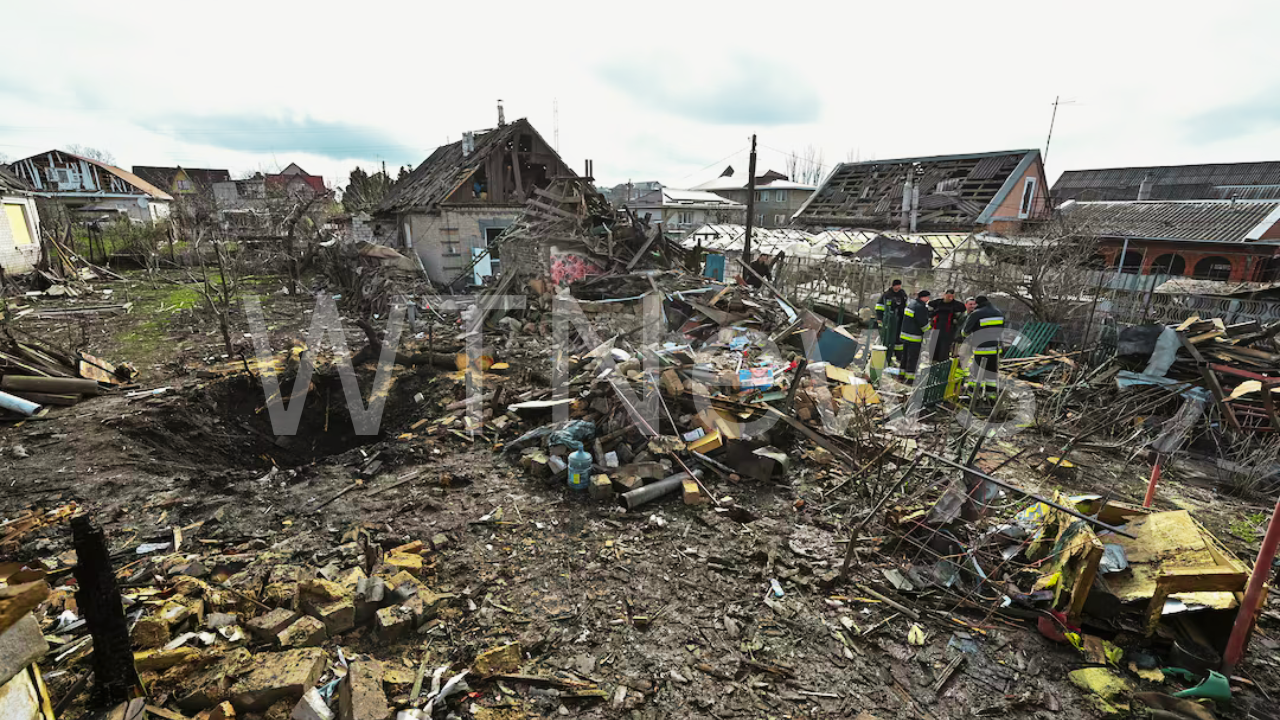A sharp, chemical odor permeates the town of Rodynske. The source becomes clear moments after arrival: a massive 250kg aerial bomb has devastated the town’s administrative center and leveled three apartment blocks. Visiting a day later, sections of the rubble still emit smoke. Artillery echoes and the crackle of Ukrainian small-arms fire targeting drones punctuate the air from the town’s outskirts.
Located roughly 15km north of the heavily contested city of Pokrovsk, Rodynske has been under Russian pressure since last autumn. Initial Russian attempts at a direct assault from the south were repelled, leading to a shift in strategy: encirclement to sever Ukrainian supply lines. This pressure has intensified significantly in recent weeks amidst failed ceasefire diplomacy, marking Russia’s most substantial territorial gains since January.
The immediate threat manifests overhead shortly after arriving. A Russian reconnaissance drone buzzes menacingly, forcing the reporting team to scramble for cover under a tree. Moments later, a loud explosion signals a second drone strike nearby. The persistent whirring of the first drone underscores its status as a ubiquitous and lethal weapon. When the sound finally recedes, the team dashes to the relative safety of an abandoned building. The drone may have returned, drawn by movement.
This drone activity over Rodynske suggests attacks are now originating much closer than previously known Russian positions south of Pokrovsk, likely exploiting newly captured territory along a key eastern highway. After a tense half-hour sheltering, the team makes a rapid exit. Along the roadside, smoke rises from the wreckage of what appears to be a downed drone.
Nearby towns like Rodynske are increasingly reduced to ruins by relentless Russian air power. Further from the immediate frontline in Bilytske, a row of houses lies destroyed by a recent missile strike. Svitlana, 61, sifts through the remains of her obliterated home. “It’s worsening constantly,” she states. “Explosions were once distant, now our town is directly targeted.” She points out widespread destruction in the town center, including a bakery and zoo.
At a secure location beyond drone range, soldiers from an artillery unit describe the escalating onslaught. “The intensity is palpable. Rockets, mortars, drones – they’re throwing everything to cut our supply routes,” says Serhii. His unit has been grounded for three days, unable to deploy to their frontline positions due to the overwhelming drone threat, waiting only for protective cloud cover or strong winds.
The conflict’s technological arms race presents a terrifying new challenge: fiber optic drones. These devices trail a thin cable connecting directly to the operator’s controller. “The video feed and control signals travel via the cable, not radio waves. This makes them immune to standard electronic jamming,” explains a Ukrainian drone engineer codenamed Moderator. While both sides initially countered drones with electronic warfare, this protection is now nullified by fiber optics. Russia currently holds an advantage in deploying these systems, though Ukraine is accelerating production.
Fiber optic drones offer unique capabilities. “They can fly lower than standard drones and even enter buildings to hunt targets,” notes Venia, a Ukrainian drone pilot. Soldiers grimly joke about carrying scissors to sever the cables. Drawbacks exist – reduced speed and cable entanglement risks – but their proliferation makes troop movement perilous. “Reaching your position is now often deadlier than being there,” one soldier remarks. “You never know if you’ve been spotted. If you have, your hours may be numbered,” adds Oles, a reconnaissance chief sergeant.
This constant surveillance forces soldiers to endure extended deployments in frontline trenches. Infantryman Maksym recounts stays of up to 31 days; others endure 90 or even 120 days continuously, a stark contrast to the 3-7 day rotations common before drones dominated. “War is blood, death, freezing mud, and constant dread,” Maksym describes. “We once fought for three days straight, repelling wave after wave. A single lapse meant death.”
Russian infantry tactics have also evolved, Oles observes. Attacks now often involve small groups, sometimes using motorcycles or quad bikes to infiltrate Ukrainian lines. This creates a fragmented frontline, less a distinct boundary and more a chaotic intermingling of positions, making territorial gains harder to discern.
Despite recent Russian advances, capturing the entire Donetsk region, including Pokrovsk, remains a formidable challenge. Ukrainian resistance is fierce but critically depends on a sustained flow of weapons and ammunition. As the conflict enters its fourth summer, Ukraine’s manpower shortage against Russia’s larger army is evident. Many soldiers, like Maksym (a former drinks company employee), received only months of training before learning on the brutal frontlines. The personal toll is heavy. “My family supports me, but it’s incredibly hard,” Maksym shares, tears welling as he speaks of his two-year-old son, whom he rarely sees. “Video calls help, but it’s the best we can manage.
Keywords:
-
Rodynske drone attack
-
Ukraine war 2025 update
-
Eastern Ukraine frontline
-
Fibre optic drones Ukraine
-
Russian military tactics 2025
-
Donetsk region conflict
-
Ukrainian soldiers stories
-
Russian assault on Pokrovsk
-
Drone warfare Ukraine
-
Civilian impact of Ukraine war
Tags:
#UkraineWar#RodynskeAttack#DroneWarfare#UkraineFrontline#EasternUkraine#DonetskConflict#FibreOpticDrones#UkrainianMilitary#RussiaUkraine2025#CiviliansInWar
